Much of the land occupied by the great metropolis of Mexico City was once underwater. Before modern times, the Valley of Mexico was flooded by Lake Texcoco and adjoining bodies of water. The Aztecs founded their capital city, Tenochtitlán, on an island in the lake in 1325. Two hundred years later, Spanish conquistadors were astonished by the scale of the city and the causeways connecting the islands of the lake to the mainland. The Spanish conquered Tenochtitlán in 1521 and built their new colonial capital, Mexico City, on its ruins. Over the following centuries, engineers built drainage works to control the floods and eventually drain the lake almost completely. (A monument to one of these engineers, Enrico Martínez, stands next to the city’s cathedral.) All that is left of Lake Texcoco now is some marshland near the international airport on the east side of the city. Some canals on the adjoining lake to the south, Xochimilco, have also survived.
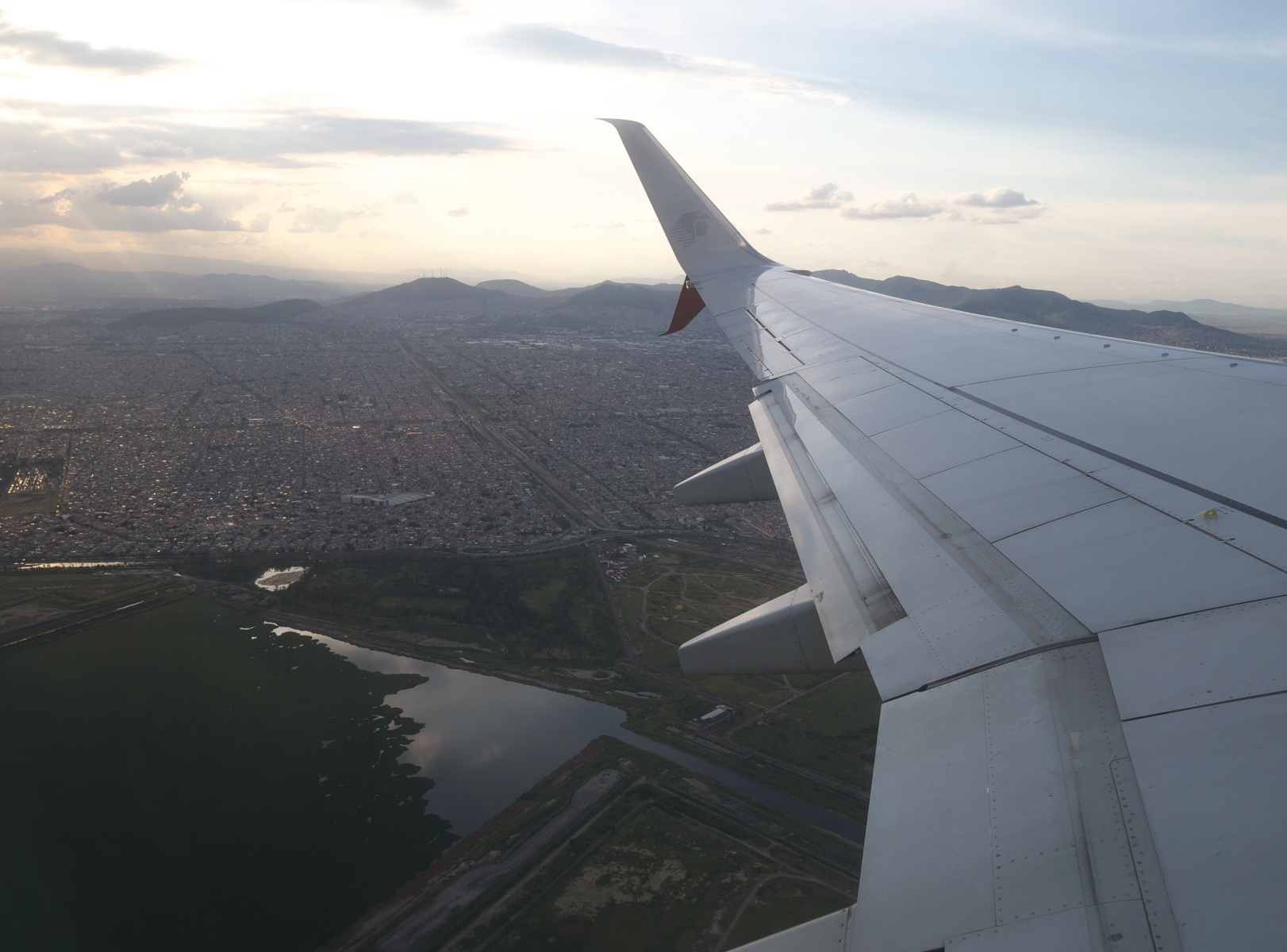
Some of the marshy remnants of Lake Texcoco, as seen from a flight out of Benito Juárez International Airport.

One of the surviving canals of Lake Xochimilco, a popular place for boat-rides in southern Mexico City.
Where exactly was Lake Texcoco? When I have visited Mexico City, I have wondered what parts of the city were above-water (islands or lakeshore), and what parts are reclaimed lakebed. I thought that someone must have made a map of the modern-day city with the outline of the erstwhile lake superimposed on it, but I was not able to find one. So I made my own.
For the modern city, I used a 1:250,000 sectional chart that was jointly issued by the governments of the United States and Mexico in 2000. (It is part of the maps collection of the Perry-Castañeda Library of UT–Austin.) This map was a good find because it is big enough to cover the entire basin once flooded by the lakes, but it is detailed enough to include contour lines. For the outline of the lake, I used a map from Wikimedia Commons.
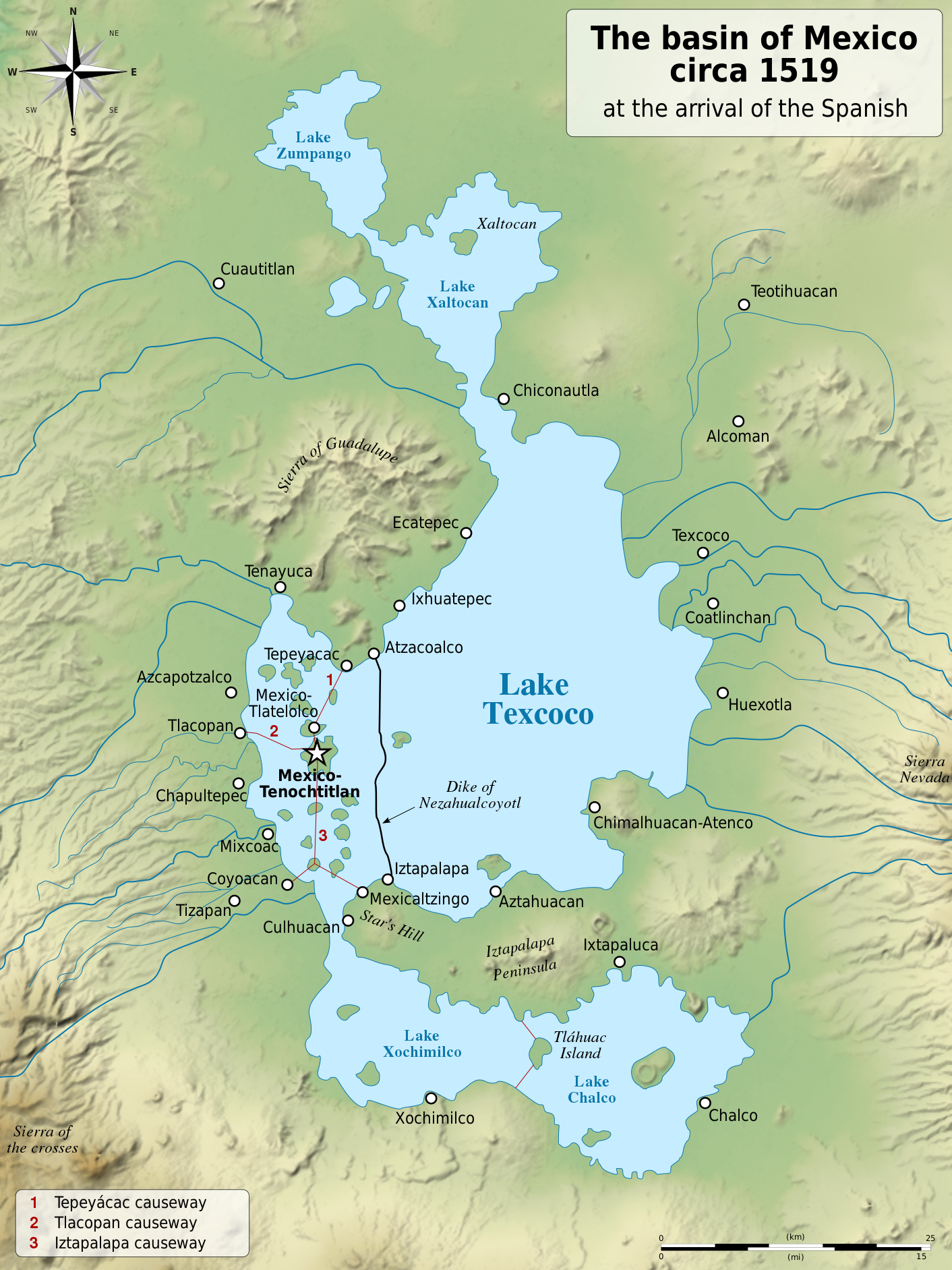
Map of the Valley of Mexico ca. 1519. (Source: Wikimedia Commons, CC-SA 4.0.)
I initially tried superimposing the lake map directly on the sectional chart, but I was never able to get the geographical points to line up. My second attempt (and this was successful) was to hand-draw the outline of the lake onto the sectional, using surviving Aztec place-names and contour-lines for reference. (I also had to use some guesswork.) Here is the result:
Some observations from this exercise of historical mapping:
- A considerable portion of the erstwhile lakebed, including land to the east of the international airport, is still not built-up.
- The marshes near the airport must have been the lowest part of the lakebed.
- The western edge of the modern urbanized area, including such Aztec place-names as Chapultepec, Mixcoac, and Coyoacán, was on the western shore of the lake and thus was never underwater—except during floods. (Rule of thumb: places with Aztec names were at least partly above-water.)
- But much of the city was underwater, including the most modern parts where there are high-rise buildings (Zona Rosa).
Now that I have made this map, I would like to see a detailed view of the territory around Tenochtitlán, which corresponds with the area around the Zócalo. Where exactly were the islands that the city was built on? But making such a map is a project for another time (and possibly another person as well).

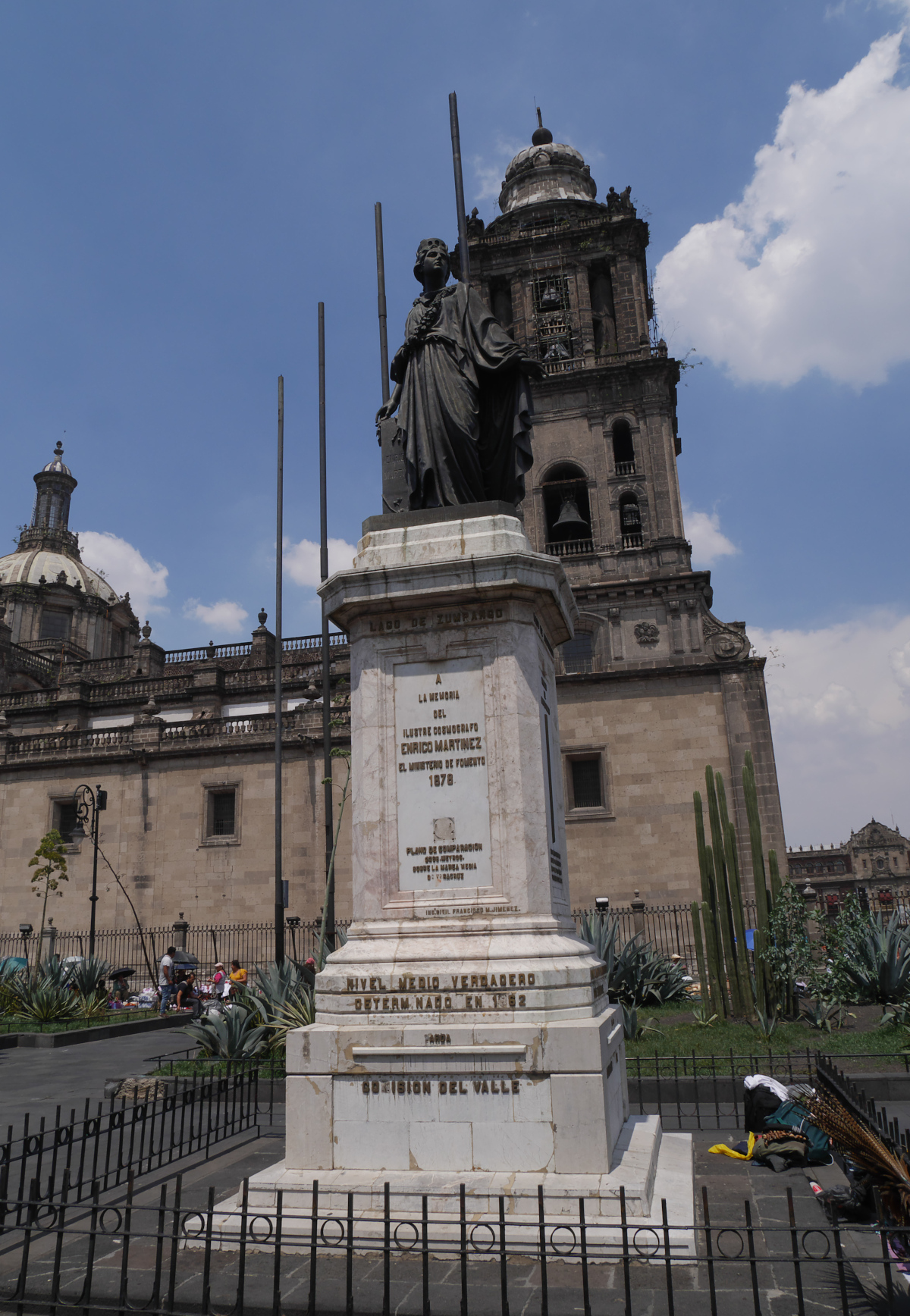
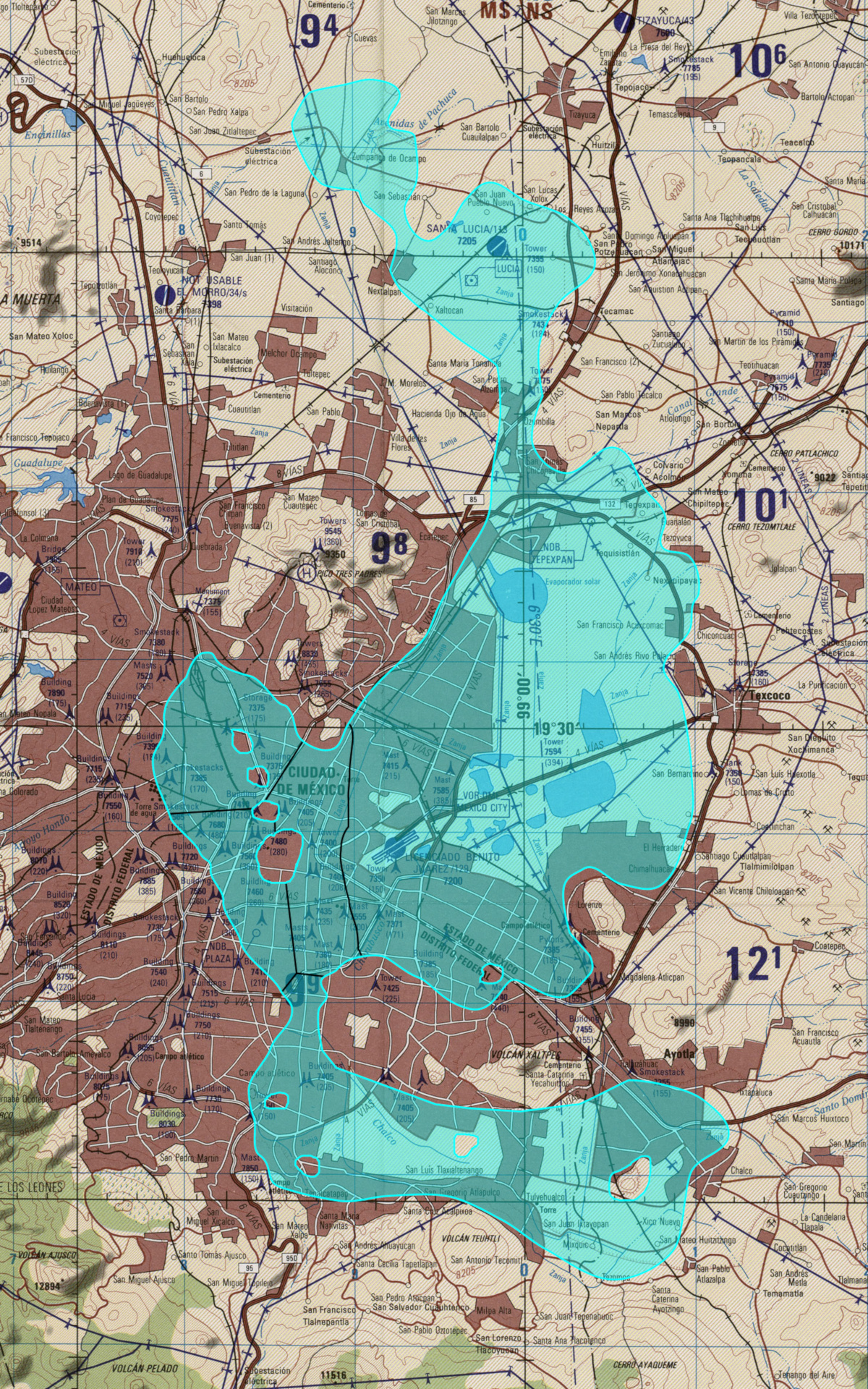
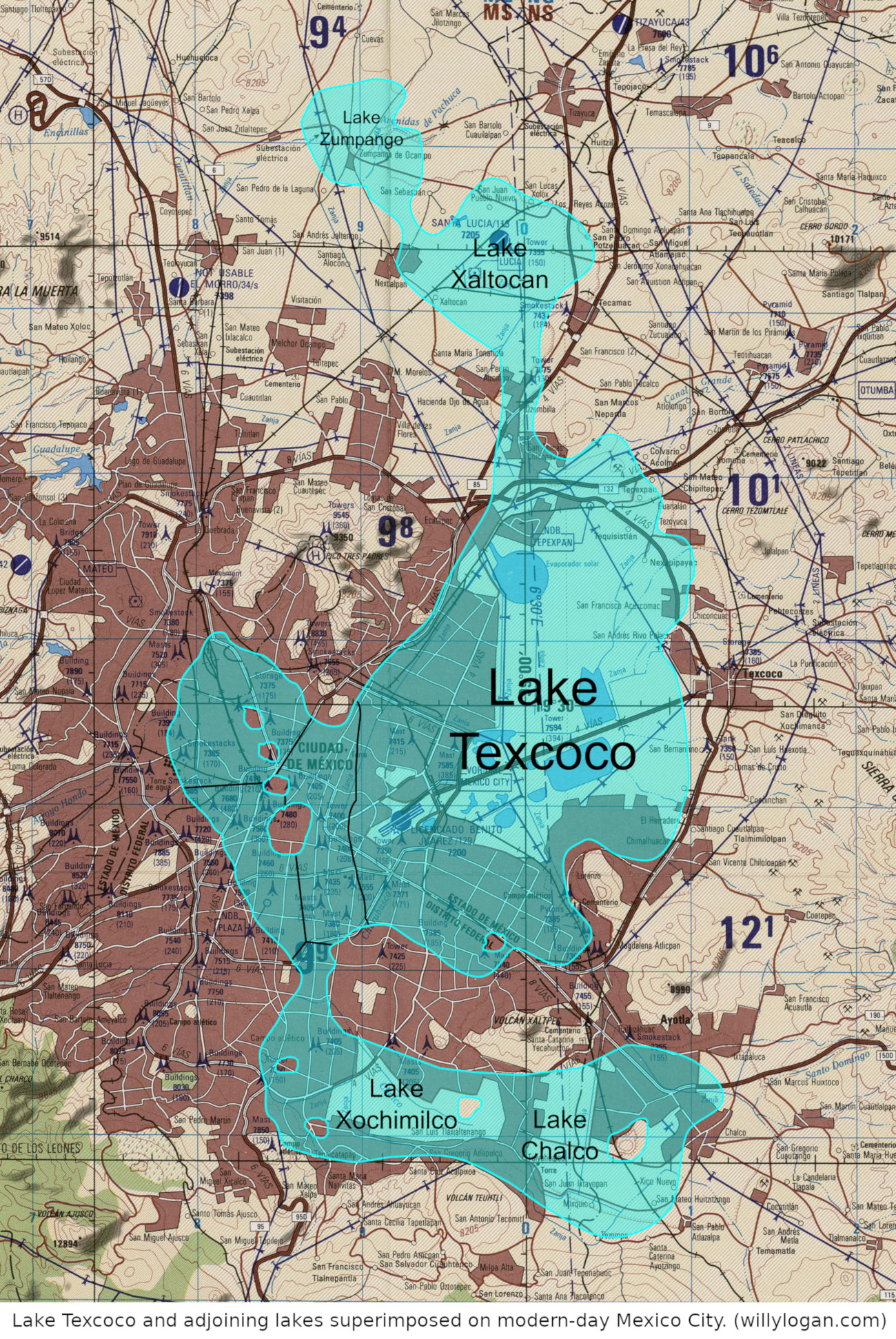
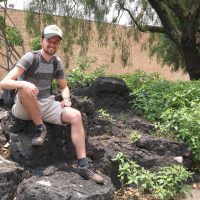



Suzan Logan
This is quite impressive!
Willy
Thanks!
Richard L. Anderson
I’ve wondered the same thing as you. Like, taking a taxi from the Zocalo to Coyoacán or Xochimilco I’d ask myself, if I’d been here before 1520, where would this route have been on dry land, and at what point would it have dipped under water? Or: When Corez et al. fled during the Noche Triste, how did they get out of Tenochtitlan? The composite map you’ve come up with is a big step toward answers such questions.
Thanks for all the effort you’ve put into the project. Nice work!!!
Willy
Thanks! Glad you appreciate it.
Karl-Henrik Ek
Thank you for your work on this map. Very interesting subject, I have spent hours reading about this. Where exactly was Tenochtitlan is a question I’ve had on my mind for a long time.
Rob Maddin
Very interesting. Just the information that I was seeking…thanks!
Francisco Valladares
Really nice work on the map!
Very interesting topic. Look forward to more.
Laura I Crull
Thank you for this map! So very helpful 🙂 Great work too!
Aaron
Hi Willie, thanks for doing this. I had the same question after a trip to CDMX, and was able to find this site after returning home. If you click Open in Map Viewer, you will see the interactive map, and can zoom in to see the original lake (with Mexica causeways and streets) overlaid on the current city. But I’m a little confused why it shows Chapultepec Hill under water.
https://www.arcgis.com/home/item.html?id=55023b0103314c63afc157b05eb42087
Willy
Thanks for sharing this! What a cool map. I hadn’t seen it before. I agree, it doesn’t make sense that Chapultepec Hill would be underwater.
Dave Mazierski
Thank you for the great maps! I have been interested in this history, culture and geography since I was a teen (in the Early Pleistocene) and got ‘re-infected’ while currently reading Charles Mann’s “1491”. I’m also a map fanatic… thank you for this worthwhile endeavour!!
Matt
This is great! I have found out about Tenochtitlan history a while ago and was wondering if someone has made Such comparision. This is what internet has been made for your content <3
Ele Vai Pedir Voce Em Namoro Em 30 Dias
I really liked your site. Thanks for the information. 64761639
Mitch
Mate, I was amazed by this. Thanks for putting so much effort so we can learn this stuff!
Ángela
AMAZING!!! Thanks so much for putting this together!
Happy to have found your website!
Jason
Thanks so much, this is right up my alley. To answer your question, Mexico City would have been on the last island in that four island archipelago, at least that’s what I think based on finding the airport on your map (closest landmark), comparing the streets and it led me right to the historic center of Mexico City.
Kay
Willy and Aaron, the question of Chapultepec Hill being submerged can be solved by understanding that the ArcGIS map is at least distorted if not completely overlaid a bit wrong. If you look at the Xico Crater in the South-east, you’ll see that it is shifted about 3.5 kilometers East of the island in Lake Chalco. It was about 65% of the island in Lake Chalco. Imagine the entire shoreline shifted 3.5 km East, and you’ll see a distinctive land feature at Chapultepec.
Btw, I love the map you made, Willy.
Willy
Thanks for the clarification, and the compliment! -Willy